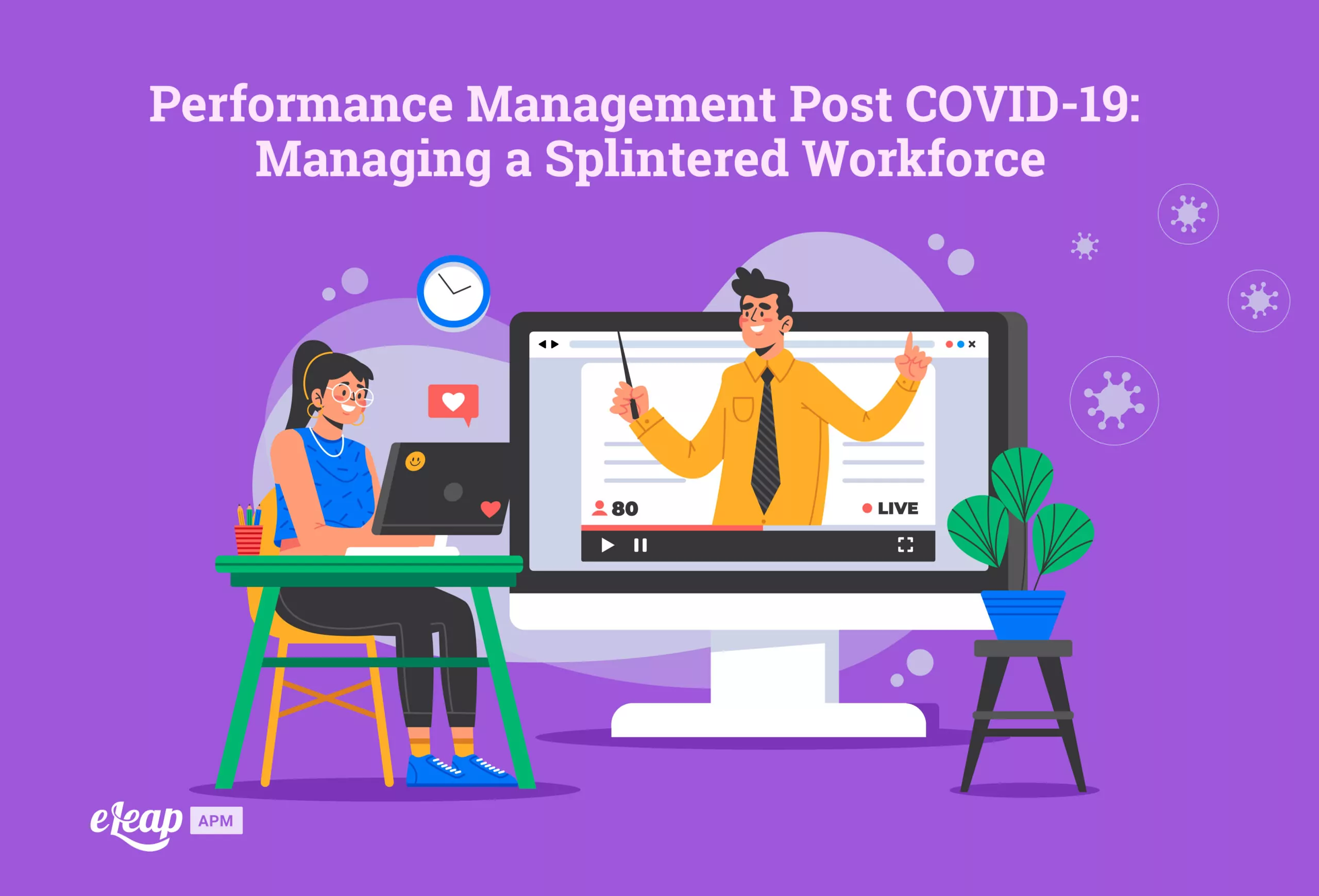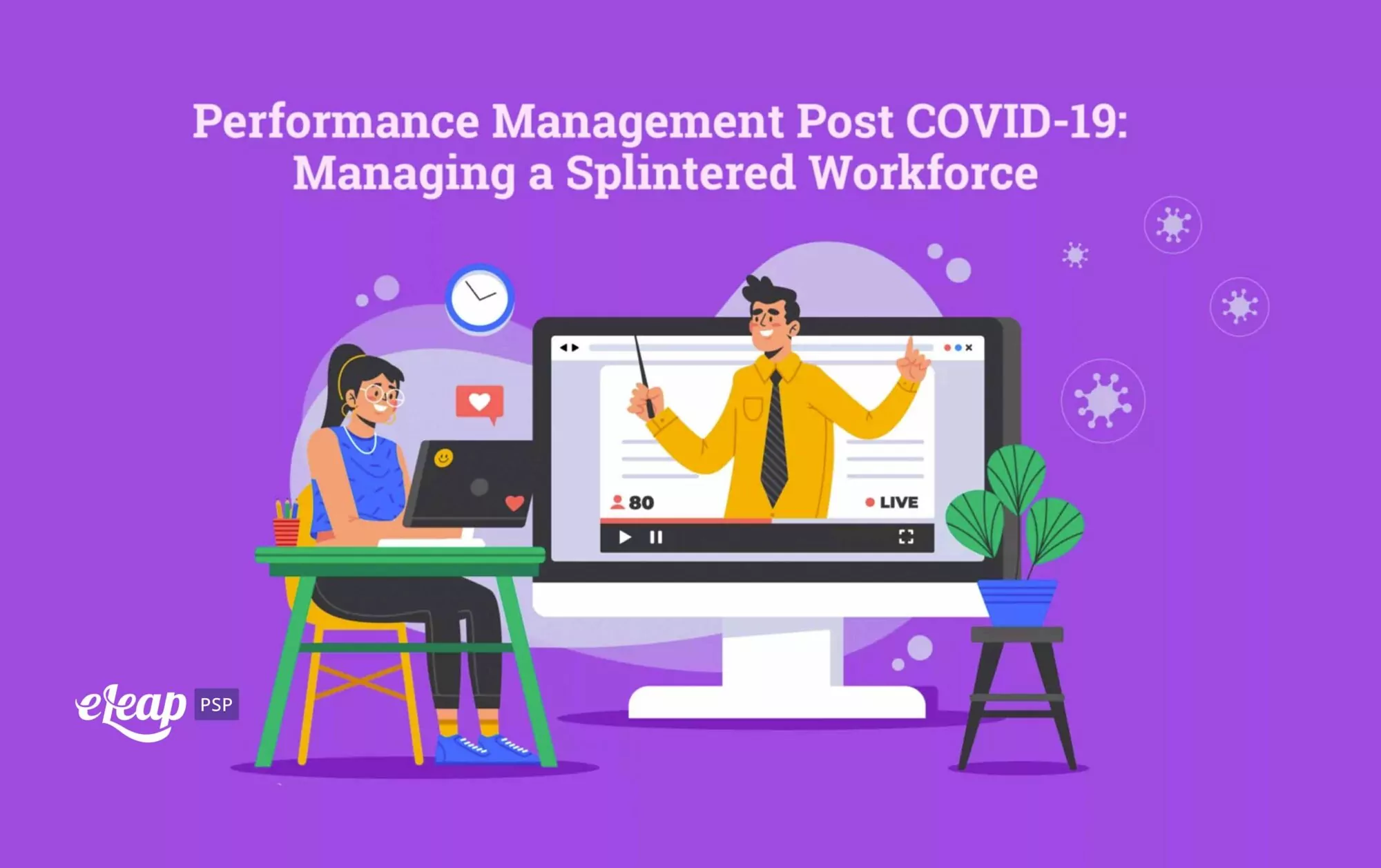Performance Management Post COVID-19: Managing a Splintered Workforce

COVID-19 came in like a lion and is still with us to some degree, even as the world continues to return to some semblance of normalcy. As we continue to recover from the pandemic, one thing becomes clear – the situation is not returning to “business as usual” for many organizations. For many with dispersed teams, this means learning how to manage a splintered workforce.

There is good news, though. While your teams might be more dispersed than ever before, there has also never been a better time in history for this change to occur. We have the technology, knowledge, and outlook needed to make this work. Not sure how you’ll handle performance management in a post-COVID-19 world when half of your employees are still working from home? We’ll touch on a few key considerations below.
Why Has the Situation Not Reversed Itself?
First, let’s tackle the question of why so many businesses and organizations are still dealing with remote teams. It’s simple – remote working, well, works. It’s doable, and it offers benefits to both employees and employers.
Employees are finding that while it requires quite a bit of getting used to, working from home can ultimately be a good thing. Many are more productive during their day. Others can structure their work responsibilities around other duties more easily. Some parents can spend more time with their children.
Employers are finding that having a significant percentage of their teams working from home offers many benefits. With a smaller in-house workforce, some companies can downsize their footprint in several ways – energy consumption, water usage, cleaning, bathroom supplies, etc. Some are even able to downsize rented facilities and save money that way.
In the end, the impact of COVID-19 in terms of remote work will probably never completely evaporate. You need to be able to deal with that. So, how do you manage performance when your team is both in-house and remote?
Be Descriptive
When it comes to dispersed teams, it’s critical that you, the leader or manager, can provide context to your team members. Remember, if they’re not in the office, it is more challenging for employees to understand the importance of their roles and how their duties tie into larger business objectives. It’s your task to communicate that to them. What’s more, you’ll need to do this frequently. Touch base often to ensure that everyone is on track.
Over-Communicate
When everyone’s working in the same office, it’s easy for someone to swing by your desk to ask a question. You can talk about challenges over lunch or take a quick break to help a team member struggling with a task. That’s not possible with a dispersed team. So, you need to over-communicate.
What does that mean? Simply put, it means you need to check in frequently. You can use a wide range of tools to do this, but you should not use just one. In particular, don’t stick to just email. Remember that more than half of human communication is nonverbal. In email, text, or chat programs, over half of what you’re trying to communicate may be lost.
So, you need to augment your text-based communications with video. Thankfully, there are dozens of potential video conferencing apps on the market today, from Skype to Zoom and everything in between. Choose the one that works best for you, that complies with organizational security requirements, and get to know it so you can train your team members.
Rethink Performance Reviews
If your organization is still conducting performance reviews once or twice a year, now’s the time to modernize your process. Annual reviews provide very little value to either the organization or the employee. Plus, they’re not all that applicable in a dispersed team situation.
What should you do, then? Do you just forgo reviews and evaluations entirely? Not at all. Abandoning evaluations completely leads to massive challenges, loss of data, and a disconnected team. You simply need to shift your frequency.
Instead of reviewing your team once or twice per year, schedule regular discussions. This allows you to provide support for employees who are struggling, provide feedback for those in doubt, encourage those in need, and celebrate with those who are doing well. It also ensures that progress toward goals does not stagnate and that performance risks are mitigated.
Create an Agile Performance Review Process
With a dispersed team, there is little room for legacy systems. They’re outdated and cumbersome. They’re tired and need to be eliminated. Instead, use an agile performance review process that delivers flexibility and ease of communication and ensures a two-way flow of information. What does that mean, though?
- Conversation – First, the review should be more of a conversation. It’s an informal situation that may last only a few minutes.
- Future Focused – While you’ll certainly touch on past performance, make sure that you’re touching on the present, as well as the future. Help team members chart a path moving forward rather than just reprimanding them for past disappointments.
- Feedback – Allow your employees to give you feedback. A one-way flow of information does not encourage success. Sometimes you need coaching, too.
- Peers – Consider allowing peer reviews to play a role in your process, as well. This can be as informal as an impromptu roundtable video call or something more formalized, but allowing employees to voice their confidence in (or concern about) other team members can boost morale and performance.
In Conclusion
The impact of COVID-19 on the world will be slow to dissipate. For many businesses and organizations, there may be no going back to pre-pandemic processes. That does not have to be a negative thing. There’s a lot of value to having a dispersed team, and benefits for both employers and employees.
However, team leaders, managers, and decision-makers will need to learn how to handle performance management with a splintered workforce. The good news is that not only is it possible, but it’s also simpler than you might think with today’s technology and a willingness to be flexible.